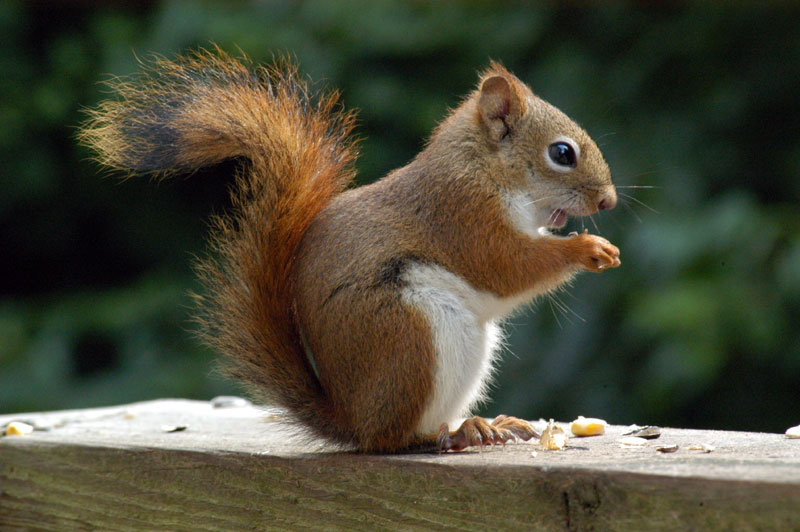


How to Draw a Squirrel
Please PAUSE the video after each step to draw at your own pace (scroll down to see the final squirrel drawing).
For the first few steps, don’t press down too hard with your pencil. Use light, smooth strokes to begin.
Step 1: Draw an oval as a guide for the squirrel’s body. The oval doesn’t have to be perfect. It’s just a guide.
Step 2: Draw a shape similar to an egg on top of the guide for the squirrel’s head. Draw a curved line inside the egg to help you place the facial features later.
Step 3: Draw two arcs on top of the squirrel’s head as guides for the ears.
Step 4: Draw a curved line that extends toward the bottom of the oval as a guide for the tail.
Step 5: Draw a series of angled lines as guides for the squirrel’s hands and feet.
That’s it for the initial sketch! From this point on, press harder with your pencil to get a more defined drawing.
Step 6: Draw the squirrel’s eye by using the line in the center to help you with placement. The shape of the eye kind of resembles a football. Shade the inside part except for a couple of portions that represent glare.
Step 7: Draw the squirrel’s nose at the end of the guide line as a small curved line.
Step 8: Draw the mouth under the nose as two curved lines.
Step 9: Use the initial guides to draw the squirrel’s ears. Use quick, short strokes to represent the fur and add lines within them for structure.
Step 10: Use the egg shape as a guide to draw the head and use quick, short strokes for a furry look.
Step 11: Draw some whiskers on the squirrel’s muzzle using quick, long strokes.
Step 12: Use the initial line as a guide to draw the squirrel’s hands. Use quick, short strokes and draw around the guide to make the arm thicker. Draw curved lines at the end for the fingers and a couple more at the top to create a nut. Add a few more curved lines to make up the fingers of its other hand.
Step 13: Draw the squirrel’s feet using the same basic technique you used for the hands. Using the lines as placement guides, draw quick, short strokes for the fur and curved lines for the toes.
Step 14: Use the oval as a guide to draw the body by using quick, short strokes to represent the fur.
Step 15: Use the initial line as a guide to draw the squirrel’s bushy tail by again using quick, short strokes. Follow the curve of the line to draw the strokes accordingly.
Step 16 (optional): You can stop here for a sketchy look or erase as much as you can of the initial guides for a cleaner look. Don’t worry about erasing all the guides. It’s okay to leave some behind.
Step 17 (optional): You can add some shading to give your squirrel drawing more dimension and volume. Pick the direction of the light source when shading so that the light shadows are consistent with it. Add a cast shadow underneath. This helps ground the squirrel so it doesn’t appear to be floating.
Step 18 (optional): You can add more value throughout your squirrel drawing for extra detail. Draw using strokes that go in the general direction of the fur. Vary the pressure on your pencil to get different degrees of tonal value. It’s a good idea to use reference to be as accurate as possible.


 (1 votes, average: 4.00 out of 5)
(1 votes, average: 4.00 out of 5)